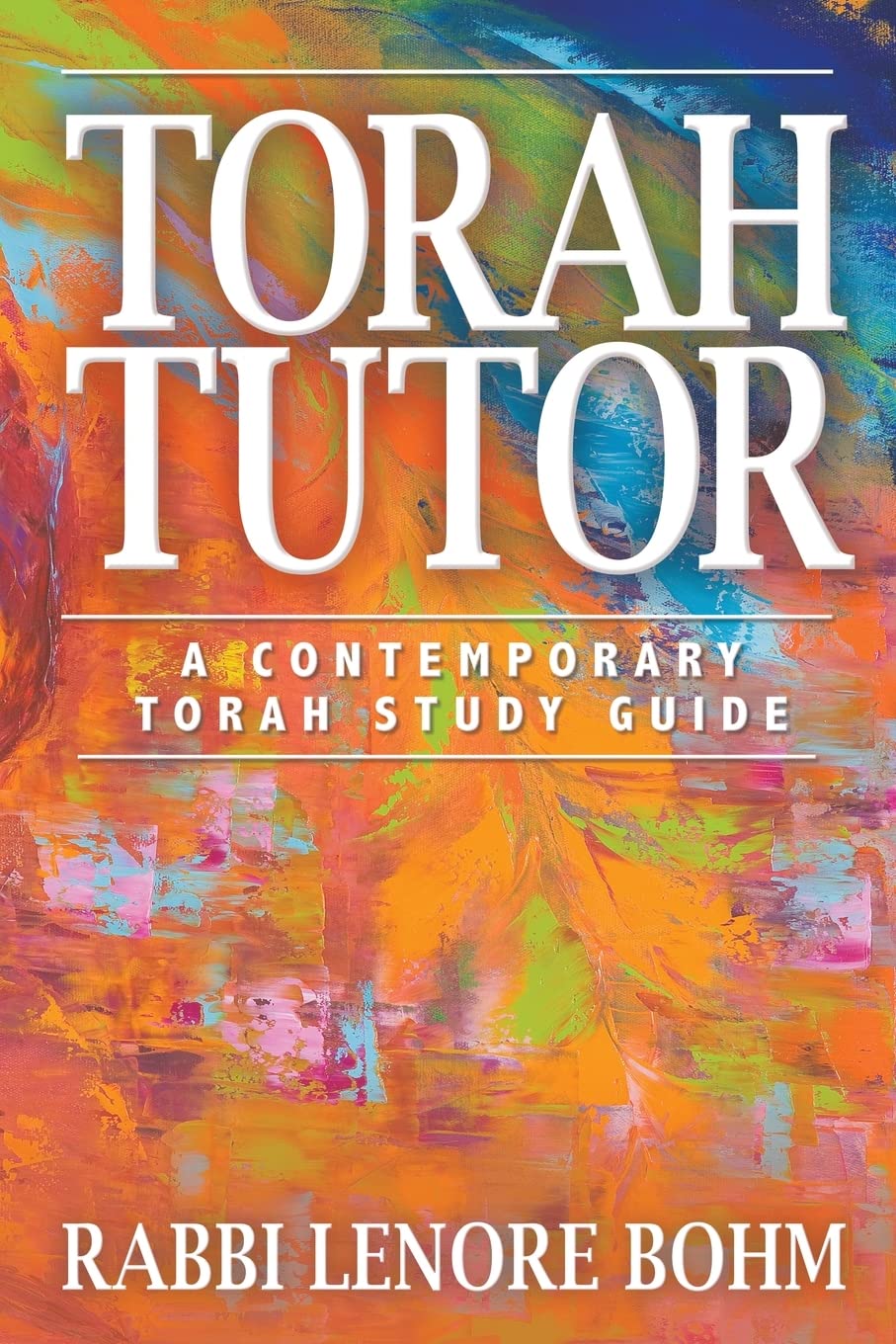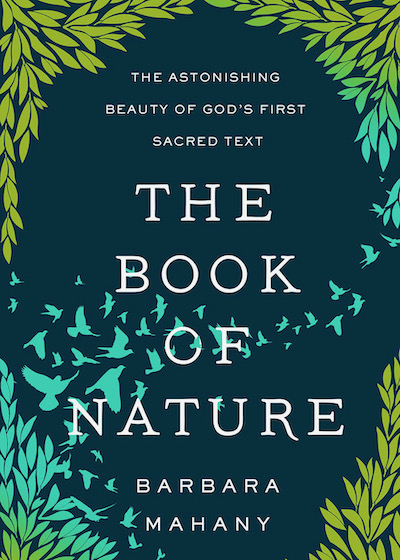Exploring ‘God of a thousand voices, a thousand lights and gazillions of colors’
By DAVID CRUMM
Editor of ReadTheSpirit magazine
Toward the end of The Wizard of Oz, the good witch Glinda is preparing to send Dorothy back to Kansas and asks Dorothy what she has learned through all of her tumultuous adventures. Dorothy hems and haws a bit as she answers, then she realizes that her experiences in the Technicolor land of Oz have jolted her into an entirely new appreciation of what she once thought of as the boring black-and-white land of rural Kansas. Finally, Dorothy tells Glinda:
If I ever go looking for my heart’s desire again, I won’t look any farther than my own backyard; because if it isn’t there, I never really lost it to begin with.
Dorothy Gale never actually appears among the more than 100 famous folks quoted in Barbara Mahany’s new The Book of Nature: The Astonishing Beauty of God’s First Sacred Text. But I am crediting Dorothy in this overview of Barbara’s new book as having prophetically captured the spiritual impulse behind this remarkable collection of meditations.
Barbara’s latest book is truly “remarkable,” because her aim is nothing short of “bedazzlement”—trying to summon all of our senses to a fresh appreciation of, quite literally, the natural world in our own back yards from gardens, trees and birds to wind, snow, dawn, dusk and the stars at night.
Down through the millennia, she explains, great writers and spiritual sages have “read” this “book of nature” as a revelatory gift from God. She writes:
Mine is the God of sunrise and nightfall, the breath behind birdsong and breeze in the oaks. Mine is the God of a thousand voices, a thousand lights, and gazillions of colors. Whether I notice or not, mine is the God who never hits pause when it comes to creation: inventing, reinventing, tweaking, editing, starting from scratch all over again, day after day after heavenly day.
Stepping into a Giant Prayer Book
“This has been true throughout my life,” Barbara said in our interview this week. For example, “There have been times when my heart is just aching and I’ll stand along the shore of Lake Michigan and I will look up into the vast, vast sky and wonder that it might be enough to hold all of the tears inside me. There are times when I might come upon an injured bird and there’s this vulnerability we share in that moment. There are so many experiences in nature that have been part of my life.
“Then, I realized that there was a long tradition behind this theological idea that nature—and all of creation—is literally a book in which God plays, opening pages for us,” she continued. “And that became the idea behind this book: As we encounter nature, sometimes we may find wisdom, sometimes we may extract a lesson, sometimes our experience is pure awe, sometimes it’s delight. And, because I think God has a sense of humor, there are times I’ve laughed. There are times I’ve wept. There are times I’ve gasped. All of those reactions are responding to the gazillion ways God can encounter us or we can encounter God.
“Once we discover that the ‘book of nature’ is an ancient idea—that this really was God’s first way of reaching out to us—then it’s like we’re stepping into this giant prayer book when we step out into the natural world. This makes it impossible for me to be anywhere in creation, now, and not be aware of this God who is crouching down low, just waiting fo my attention.”
‘The Life-and-Death Value of Paying Attention’
Detailing the many perspectives readers will find in this collage of reflections, the American Library Association’s recommendation of her book begins with these lines:
Writing with a nurse’s foundation, a scientist’s eye, a theologian’s mind, and a poet’s soul, journalist Mahany contemplates God’s presence as revealed in nature—God’s “first sacred text.” Tracing the Judeo-Christian belief that scripture succeeds and augments nature by directing humanity to knowledge of the divine, Mahany looks to nature itself, marveling at its intricacies and blending scientific facts with literary descriptions that all point unquestionably to a grand designer worthy of worship.
When I read that review, I was intrigued that the writer had picked up especially on Barbara’s background as a nurse, so I asked her about that part of her life.
“That does make sense,” she said in our interview. “The fundamental art of nursing is paying attention and by that I mean paying sacred attention to every aspect of a patient’s life. Nursing is an example of life-and-death paying attention. Looking back at my life, I don’t think anyone would choose to go to nursing school as a first step toward become a writer, but I am so blessed that I did study at the nursing school of Marquette University, a Jesuit university, and I learned that life-saving discipline of paying attention.”
Are you already intrigued enough to get your own copy of this unique book? If so, click on the photo of the cover and order one right now.
And, yet, there’s so much more!
The Spiritual Revelations of ‘the Commonplacing Tradition’
Beyond the revelations of this nature-based approach to spirituality, in these pages readers also will discover a second spiritual discipline that will be of particular interest to anyone who loves writing, enjoys self expression or pursues the vocations of teaching or preaching.
Barbara doesn’t fully unveil this second spiritual practice until the middle page of this book, page 87 to be precise. That’s the page where she pauses to explain how she assembled this new book with its kaleidoscope of citations to other writers and sages. She was able to amass these vast resources—this crowdsourcing of her own book—through many years of a daily practice known as keeping a “commonplace.”
Despite the name, it’s certainly not a common term, today, but perhaps you recall seeing that unusual term somewhere? The practice stretches back many centuries as a sort of first cousin to keeping a daily diary or journal. Rather than simply recording one’s own notes in a notebook, a commonplace is a sort of scrapbook of collected bits and pieces from other writers and published sources.
Barbara began doing this during the many years she wrote for The Chicago Tribune. As she was working on her own reading, research and reporting through those years, she would save “all the best little bits I found.” This “squirreling away,” as she describes it, is the heart of the practice followed by writers and scholars from ancient Greeks to the Renaissance—to many writers today.
“Mostly, I keep my commonplace on my computer today,” Mahany said in our interview. “Writing this book began with an exercise in reading 200 books—reading each one with a pen in hand so I could underline passages and make notes in the margins. Then, when I would finish a book, I would type out all the quotes and notes along with the complete references to that book, right down to the page number. So, my commonplace that helped me to write this book wound up on my computer.
“But I have been doing this for years. For example, I love words. Whenever I’m struck by language that I love, I’m such a disciplined person that I put those words I have found into my commonplace. I’ll save those words along with the definition and a careful citation of the source. I have saved thousands of words and their references! I also have on my desk a journal into which I can stuff bits I come across, which was wonderful when I was writing this book. I could turn to my commonplace and see what I might have saved on a particular subject I was writing about: What have I got on starlight? On birds? On rain? There I would find all of these meticulously detailed pieces I could use.”
A Truly Mysterious Tradition
Barbara certainly is not alone! Sherlock Holmes created huge commonplace volumes for his personal library on a wide range of subjects. As Holmes researched the clues in one particular case, he turned to his commonplacing and Arthur Conan Doyle describes the great sleuth digging into a series of these tomes while sitting “upon the floor like some strange Buddha, with crossed legs, the huge books all round him.”
In fact, there is a long tradition of “commonplacing” among mystery writers. For example, a master of the “webwork plot,” Harry Stephen Keeler, would actually combine his mystery manuscripts and his commonplacing by pasting newspaper clippings into the pages of his early drafts.
Within literary circles, commonplacing keeps popping up as a valuable resource. W.H. Auden published one of his volumes, titled A Certain World—a Commonplace Book. The legendary comic book creator Alan Moore and novelist Virginia Woolf both have followed the “commonplacing tradition.” And today, fans of Lemony Snicket’s YA novels have read about this practice. Dozens of bestsellers over the years have amounted to commonplaces devoted to a particular theme, especially books that are collections of the best last words, eulogies and obituaries. In his book, Shining Brightly, Howard Brown describes how Babson College founder Roger Babson spread happiness each day of his life with his own commonplacing practice of sharing his joyful quotations with people he met. In Guide for Caregivers, Benjamin Pratt also recommends carrying your commonplace quotes with you on slips of paper to share with others.
You might think of commonplacing as core concept behind Pinterest.
In this book, Barbara describes the spiritual gifts of this process—and the reflections that spring from it—as “choreography” and the winding spiritual pathway through these reflections as “ideas wriggling around deep in your soul.”
“What I’m getting at when I say that is: Through this process, we can save references to moments that have captured our attention and imagination so that, later, we can continue to ponder them. We can look at these experiences from this angle, then from another angle. What I’m describing is a soulful movement in which we ponder things in various ways so that epiphanies may come.”
Don’t Overlook the Treasure Map!
If you want to start your own spiritual practice with the real-life book of nature—perhaps in your own back yard or in natural areas near your home—Barbara closes her book with a 30-page treasure map. Well, you might not recognize it, at first glance, as a map. But that’s what she lays out.
Part of this map is a detailed list of the 200 or so books by more than 100 writers that she explored as she prepared this manuscript. Then, she curates her own list with a section she calls “A Bookshelf of Wonder.” In these pages, she walks us through her library, pulls out books one or two at a time and explains in a paragraph why each selection might be valuable for her readers to explore.
“I’m glad you are going to point this out to your readers,” Barbara said. “Clearly, I’m someone who loves reading and I wrote this book as an invitation: Come along with me on this adventure.
“As I read for this book, I found writers who blew me away with their beauty and brilliance. As a journalist, I used to write a column for The Chicago Tribune called ‘Books for the Soul.’ So, I was in the habit of introducing other readers to the gems I was finding. That’s why I wanted to close this book by offering these recommendations to readers. At that point, they’ve shared the adventure with me and, before they go, I want them to be able to find some of the best books that shaped my own journey.”
“So, by the end of this book, your readers will have shared an adventure with you—and, as they depart, you’re loading their arms with books they really should read,” I said in our interview. “How do you hope they’ll be changed by this encounter?”
“That’s easy to answer,” she said. “I hope that I have introduced readers to this ancient and timeless idea that all of creation is shimmering with holiness, with the Divine, that is ours to encounter—and I hope that they will go out into the world themselves and begin to slow down as they look with new eyes and listen carefully.
“What is so amazing about this particular book—the book of nature—is that it is wordless. It is beyond our human languages. The book of nature needs no translation from part of the world to another. The book of nature is open to everyone of every tradition all around our world.”
.
Care to Read More?
GET THE BOOK—Barbara’s latest book, The Book of Nature: The Astonishing Beauty of God’s First Sacred Text, which currently is available in hardcover and Kindle versions from Amazon.
VISIT BARBARA ONLINE—If you visit her website, you can learn a lot more about her, including her fascinating life story, which begins:
Barbara Mahany, a former pediatric oncology nurse, spent nearly three decades as a reporter and writer at the Chicago Tribune. She is now a freelance journalist and the author of five books, including four collections of essays. Her latest book, The Book of Nature: The Astonishing Beauty of God’s First Sacred Text (Broadleaf Books), will be published on the next vernal equinox, March 21, 2023. Her first book, Slowing Time: Seeing the Sacred Outside Your Kitchen Door (Abingdon Press, October 2014), has been called “balm for the hurried heart,” and “a field guide into your holiest hours.” Her second book, Motherprayer: Lessons in Loving (Abingdon Press, April 2017), explores the sacred mysteries of mothering—its sorrows, joys, trembles, hallelujahs, and the tumble of questions without answers.
ENJOY OUR EARLIER INTERVIEWS WITH BARBARA
- 2015: The Barbara Mahany interview on ‘Slowing Time’
- 2017: Barbara Mahany on ‘Motherprayer: Lessons in Loving’
Consider these Related Books on Daily Spiritual Resources
 Torah Tutor—A Contemporary Torah Study Guide by pioneering Rabbi Leonore Bohm invites readers to explore the first five books of the Bible, the Torah, through the Jewish practice of dividing those books into a cycle of day by day readings.
Torah Tutor—A Contemporary Torah Study Guide by pioneering Rabbi Leonore Bohm invites readers to explore the first five books of the Bible, the Torah, through the Jewish practice of dividing those books into a cycle of day by day readings.
Shining Brightly by entrepreneur and two-time cancer survivor Howard Brown tells true stories of resilience that depend on daily interactions with friends, family and the community around us.
A Guide for Caregivers by pastoral counselor Benjamin Pratt is divided into short chapters packed with creative ideas for the health and wellbeing of the millions of caregivers among us.



Here is a wild idea – I suggest that Barbara Mahany’s “Book of Nature” be adopted as a supplementary text for any faith-based college or university that has an environmental science or environmental studies major. A must-read for those entering the field!